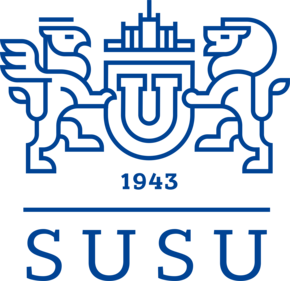The 7th (23rd) All-Russian Archaeological Congress is a tradition revived since pre-revolutionary times. The event takes place every four years, travelling to major scientific centres across our country. This year, the congress has been held at the Siberian Federal University in Krasnoyarsk.
The congress's work covered 17 topics: from the "Formation and Development of Cultural Traditions in the Palaeolithic and Mesolithic Periods" to "Computer Technologies and Non-destructive Methods in Archaeological Research".
Andrey Epimakhov, Professor at the SUSU Department of Russian and International History and Head of the South Ural Archaeological Centre of the Institute of History and Archaeology of the Ural Division of the Russian Academy of Sciences, chaired the "Problems of Bronze Age Archaeology" section. The Chelyabinsk archaeologist delivered a report on the "Sedentism and Mobility as a False Dichotomy", describing isotopic arguments in the search for evidence of mobility in the Southern Trans-Urals Region of the Bronze Age.
"We were fortunate to have implemented a Russian Science Foundation project over the course of five years, and it was largely focused on isotope geochemistry in solving archaeological problems, particularly mobility diagnostics," said Andrey Epimakhov. "So we have found ourselves at the forefront of everything and, of course, it's inspiring, because our colleagues have highly praised our work. We will continue to move forward in this direction, even though new challenges have already been identified. At the Congress of Russian Archaeologists, we traditionally have summarized the past period, outlined research plans of varying scale for the next four years, and examined new scientific trends."
This year, the public has particularly been interested in various natural science methods: paleogenetic, paleozoological, and isotopic research.
More than five hundred archaeologists from virtually every city, from Magadan to Kaliningrad, attended the event. Over the course of several days, the conference featured approximately six hundred scientific presentations and five roundtable discussions, two of which the SUSU professor participated in. One of these discussions addressed the long-standing, yet unresolved, Andronovo problem: participants discussed the similarities between Bronze Age sites dating from the second millennium BC, located across a vast area from the Cis-Ural Region to the Minusinsk Basins.
The second roundtable was devoted to the development of paleogenetic research in Russia and the prospects for integrating this field with archaeological and linguistic data.
The history of the All-Russian Archaeological Congress spans over 150 years. The first scientific gathering had taken place at the dawn of archaeological science in the 19th century: approximately one hundred and thirty scholars had gathered in Moscow for a general meeting in March of 1869. During the Soviet period, the Archaeological Congress had suspended its work; the event held in Minsk in 1926 had become the last one. The tradition of holding an all-Russian meeting of antiquities specialists every four years had returned only in 2006. Since then, the event has been held in Novosibirsk, Suzdal, Veliky Novgorod, Kazan, Barnaul, and Krasnoyarsk. The next Congress will be held in the city of Yekaterinburg.
The proceedings of the 7th (23rd) All-Russian Archaeological Congress are publicly available on the event website.




